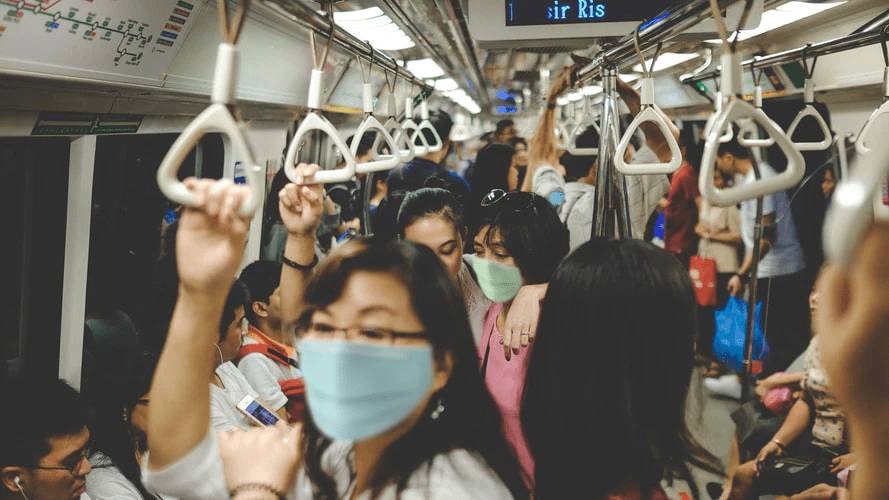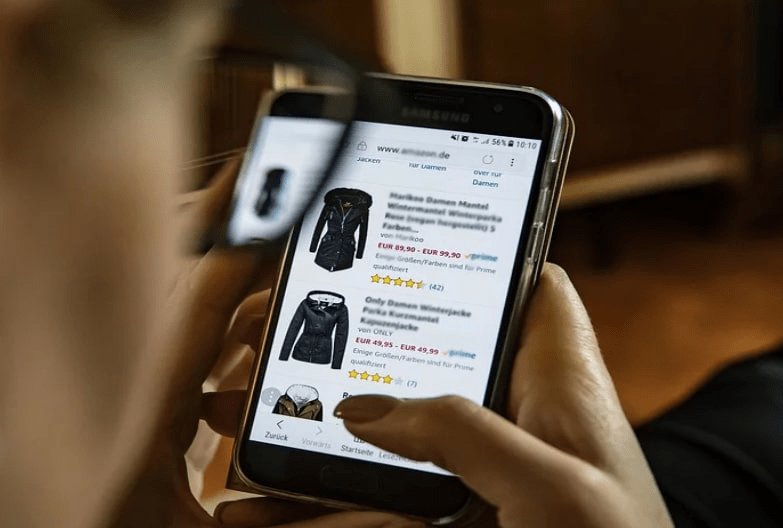Amidst Coronavirus High-Alert, is it Safe to Click on Online-Buy for Foreign Products?
Amidst Coronavirus High-Alert, is it Safe to Click on Online-Buy for Foreign Products?
Are you waiting on an important package that is going to be imported all the way from China? Well guess what? It is not gonna reach you any time sooner!
The reason is simply in the newspapers! Read on further to know whether you should click on that buy button on Amazon for the cool headphones that you saw earlier!
If you are going out amid the protracted high risks of Coronavirus infection, you must have observed some major changes in your surroundings. Changes though not ginormous but noticeable, especially at retail markets, clothing stores and food joints.
Well, let me point it out to you. They all are wearing protective gears such as masks, gloves and some even completely different attire on the whole.
Taking a walk through your usual route seems like passing by a hospital scene. Why is that so? I assume you know the answer already!
No? Well, then either you are living under a rock or are completely oblivious to the fact that the world is under a massive alert for Coronavirus.
I hope you do not belong to that category and are already aware of the present-day situation and the mass hysteria it has caused so far.
Despite the panic and mass hysteria, you should compose yourself and get educated about the facts related to the disease. The purpose of this blog is to clarify any misconception regarding the viral spread that originated from China, among which is a common query- amidst Coronavirus High-Alert, is it Safe to Click on Online buy for Chinese or Foreign Products?
Cause of the mass hysteria

COVID-19, the respiratory viral disease that is caused by the novel Coronavirus SARS-CoV-2 has been recently declared as a pandemic by the World Health Organisation and have claimed more than 4000 lives worldwide. The numbers are still growing and this is the main cause of concern for many.
New cases have emerged all over the world since the outbreak in Wuhan, China. It was simply concluded that the viral spread was either caused by the people who travelled after contracting the virus in China or people who came in contact with the prior and then further on transmitted the virus.
Ever since the virus was recognised for its lethal abilities, enumerable studies and related researches have been on a roll. Still, so far the exact origin of the virus is not known, neither the reason for the worldwide outbreak.
As mentioned above, the hypothesis of the outbreak has been coined already. People worldwide are getting detected, tested, quarantined, treated, recovered and educated about the preventive measures against the virus which is the best possible remedy so far. However, it remains a matter of great research that how people are still getting infected even after worldwide quarantine and preventive measures under full operation.
This points out to the fact that even today, very little is known about the virus.
This has to lead to more speculations that the virus has other modes of transmissions beside being zoonotic (spread from animals to humans, humans to humans) and transmissible through air droplets from the infected cough or sneeze.
Other modes of transmission? Do international couriers count?

The first thing that might have popped up in everybody’s mind after the Wuhan outbreak and the following worldwide pandemic, was to completely abstain from buying Chinese products, as they might be infected as well.
This is a baseless thought though for various reasons:
Most of the Chinese products are imported under strict regulations and undergo a thorough screening process. This makes them completely ineligible for harbouring any infamous viral agents such as CoV-2.
The fact about the mode of transmission of the virus itself debunks any theories of possibility of its dispersal through postal packages.
The virus is found to transmit via respiratory air droplets. Any other mode is uncertain and not supported for now.
The very material and conditions of courier parcels inhibit any chances of survivability of the virus. The virus stays viable outside a living host for few hours only under favourable environmental conditions such as temperature and pH.
The delivery routes encompass some very harsh conditions for CoV-2 to stay potent. For example under constant exposure to UV rays, there is thin to null chances for the virus to remain viable.
A theory suggests that infected liquid droplets might contaminate the surface of a metal or glass product handled by an infected worker. This needs more proof of confirmation to be the truth.
Anyways, even though metal surfaces have shown the tendency to be contaminated by the viral droplets and somehow make them viable for hours, there is no way a product delivered from all the way to China can retain the virus for that long.
A quick fact about delivery time from China to other countries:
5-10 days to other Asian countries;
7-15 days to the US and European countries;
7-30 days to the rest;
On top of all, surface mails can take 1-2 months!
Some viral strains do exist that have a high risk of infection spread through this way, but not the novel Coronavirus (so far).
The best way to protect yourself from the virus is to adopt the preventive measures issued by WHO. Wash your hands regularly and maintain cleanliness around your house.
So, is it safe to make an online delivery from China?
Yes! It is perfectly safe to receive any goods or products from China. The World Health Organisation has issued several public announcements regarding the facts about the SARS-CoV-2 including its likelihood of surviving on delivered packages:
Direct quotes from WHO’s official site states that:
“People receiving packages from China are not at risk of contracting the new Coronavirus.”
“The likelihood of an infected person contaminating commercial goods is low and the risk of catching the virus that causes COVID-19 from a package that has been moved, travelled, and exposed to different conditions and temperature is also low.”
The Centres for Disease Control has also stated some facts that shed some light on this matter:
A quote taken from their official website on how it spreads states that:
“Coronaviruses are generally thought to be spread from person-to-person through respiratory droplets. Currently there is no evidence to support transmission of COVID-19 associated with food. Before preparing or eating food it is important to always wash your hands with soap and water for 20 seconds for general food safety. Throughout the day wash your hands after blowing your nose, coughing or sneezing, or going to the bathroom.
It may be possible that a person can get COVID-19 by touching a surface or object that has the virus on it and then touching their own mouth, nose, or possibly their eyes, but this is not thought to be the main way the virus spreads.
In general, because of poor survivability of these Coronaviruses on surfaces, there is likely very low risk of spread from food products or packaging that are shipped over a period of days or weeks at ambient, refrigerated, or frozen temperatures.”
long story short, a surface made of glass or metal has possible chances of retaining viable viral particles that are dispersed from an infected person’s mouth. Such objects can also be contaminated via touch of an infected person when he/she has touched the surface after sneezing or coughing in their hands. If within a duration of 6-8 hours post contamination, a healthy individual comes in contact with the surrounding and touches his/ her face after touching the contaminated surface, then the chances of contracting the virus is very high for him/ her.
The key factors here are environmental conditions, time duration post contamination and type of material. Paper and any fabric materials are not ideal for the virus. Although glass and metals can carry the virus but only for few hours. Humidity, temperature conditions and UV factors also add on to another layer of barrier against CoV-2.
In conclusion, as already mentioned above, it is highly unlikely for CoV-2 to remain viable under unfavourable conditions that are present during postal deliveries. Short or long distance postal deliveries are completely safe as long as the delivery guy is healthy, as direct contact with the infected droplets is the only mean by which the virus can infect you. Hence, receiving couriers or any online delivery from China will not make you another victim of the Coronavirus disease 2019.
However in the present circumstances, it is highly unlikely for you to even make that order. Best you could do is to have patience and let the time pass. If you are waiting on some very important document from a foreign university, then contact them to hold on to it for some time. Even though you do receive any foreign package, it will be completely clear off of any infection and highly unlikely for you to catch COVID-19. Unless off course your delivery person neglects safety measures against the infection.
Stay safe, stay indoors!

